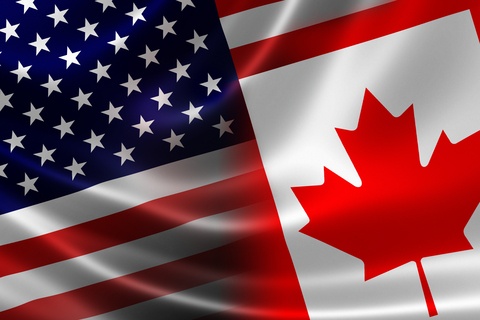All our products are proudly made in North America! It has become a common refrain among Americans that we should “buy local” and look for “Made in the USA” labeling on our consumer products. How many people, though, have really considered all the factors that support the publicity to buy American? Obviously, as the economy has struggled in recent years the importance of creating and keeping American jobs has taken center stage—money and jobs that go overseas rarely return, while resources that remain here in the US continue to contribute to the growth and stability of our economy. This is particularly true in the case of manufacturing, as opposed to service industry jobs. In fact, research has shown that for every manufacturing job, up to eight ancillary and support jobs downstream in logistics, retail, and services can be maintained. The quality of products made overseas in places like China and Taiwan has triggered widespread criticism for years because products originating in such places are likely to break or malfunction in a short period of time. Not surprisingly, according to a survey published by the Consumer Reports National Research Center, 78% of Americans would prefer an American-made product over an identical one made abroad. Perhaps even more telling, in a survey conducted by the Boston Consulting Group, more than 60 percent of Chinese respondents said they’d buy the American-made version over the Chinese even if it were to cost more. That’s not really surprising, considering that lack of product safety standards and misguided efforts at cutting costs in China continue to have dangerous and even deadly consequences. Consider the repeated recalls of pet food and treats, infant formula, and drywall, not to mention the long-standing issues of lead paint found on children’s toys. Unregulated manufacturing processes in Asia threaten the global environment. Concerns over human rights violations in manufacturing industries are gaining more traction recently, as international attention has focused on such tragedies as the factory collapse in Bangladesh and widespread use and abuse of child labor. Despite frequent criticism of US regulatory systems, it is commonly understood that in the United States, we are generally protected from unsafe and inhumane working conditions, unrestricted use of child labor and tragically low wages that border on slavery. Additionally, images of air pollution in Beijing and India are sober reminders of threats to the environment posed by unregulated manufacturing processes. In the US, air and water quality standards exist that protect our health and environment. As awareness of human rights and environmental issues has grown, support for products manufactured in the USA and other countries with appropriate protections in place, has gained strength At BTL Liners, we have repeatedly witnessed our competitors choose to source much of their materials from Asia. In contrast, we remain determined to keep jobs here at home and to provide a consistently high quality, dependable product that does not sacrifice the environment or human dignity in its production. We have maintained stable relationships with our suppliers in North America for decades, meaning we can guarantee superior quality control, availability and reliable pricing. Coupled with our impeccable quality and incredibly fast turnaround times (typically 24-48 hours), our customer service is the best in the industry—we show our customers appreciation and respect, whether they are individual homeowners or represent the largest corporations in the world. Please call us at 541-447-0712.
Why We're "Made in North America"
AquaArmor Pond Liner
The most versatile liner on the market today, AquaArmor maximizes protection from harmful UV rays, tear resistance and punctures that cause leaks. Simply the best liner on the market.Newest Articles:
Subscribe to Updates
Article Topics
Agriculture
Covers
Tarps
Aquaponics
Energy
Liners
Hydroponics
Greenhouse Light Deprivation
Water Gardens
Farm Ponds
Greenhouses
Greenhouse Gardening
Greenhouse Cover
Fish Pond
Pond
Fish
Golf Course Pond
Golf Course Water Feature
Natural Pond
Landfill Cover
Irrigation
Irrigation Pond
Irrigation Canal
Hydraulic Fracturing
Oil Containment
Secondary Containment
Fracking
Oil Liner
Fuel Liner
Frac Pit
Fire Protection Pond
Fire Suppression Pond
Fire Pond
Geomembrane
Canal Liner
Brine Pond
Koi Pond
Algae Pond
Nursery Pond
Retention Pond
Man-Made Lake
Lakes
Geothermal Greenhouse
Commercial Greenhouse
Preformed Pond Liner
Groundwater Storage Lagoon
Mining Pond
Mining Lagoon
Evaporation Pond
Salt Pond
Pond Liner Materials
Catch Basin
Stormwater Management
Barren Pond
Processing Pond
Natural Swimming Pond
Drainage Systems
Ditch Lining
Aquaculture
Sewage Lagoon
Mining Geomembranes
Floating Cover
Wastewater Containment
Geosynthetics
Cistern Lining
Erosion Control
Fertilizer Containment
Winery Water
Silage Cover
Winery Irrigation Pond
Baseball Field Cover
Tailings Pond
Produced Water Liner
Produced Water Winery
Construction Pond
Winter Ponds
Fish Hatchery
Algae Raceways
Coal Ash Containment
Fishing Lakes
Oilfield Pits
Aquatic Habitats
Lake Restoration
Landfill Cell Liners and Cap Covers
Leachate Pond
Rain Cover
Heap Leach Pads
Residential Ponds
Gas Collection
California Drought
California Pond Liner
Overburden Containment
Pond Liner
Fish Stocking Pond
Mine Reclamation
Wastewater Cover
Drought
Irrigation Reservoir
Sludge Management
Cable Parks
Baffle Systems
Alternative Daily Covers
Reservoir Pond
Aeroponics
Food Shortages
Homesteading
Prepping
Toxic Waste
Potable Water Storage
Green Roof
Clearwells
Stormwater Harvesting
Snow Making Ponds
Pond Plants
Hunting Ponds
Oregon Pond Liner
Lavender
Site Runoff Containment
EPDM Liners
Duck Hunting Pond
Deer Hunting Pond
Decorative Ponds
Methane Capture
Large Pond
Sports Field Liner
California Fire Pond
Helicopter Dip Pond
Oregon Fire Pond
Pond Skimming
Geotextile Fabric
Silt Fences
Backyard Greenhouses
DIY Greenhouse
RPE Liners
Desalination



